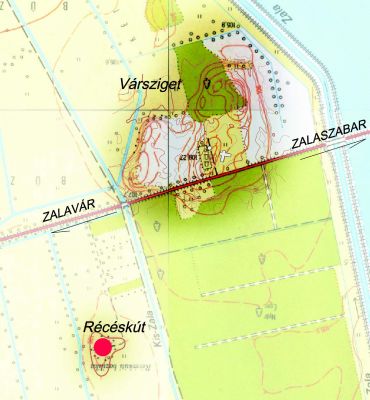The eastern terminal of the three-aisled church built after the middle of the 9th century was sectioned with three inscribed apses, while its western terminal was sectioned with a gallery and a staircase turret. It was renovated at the end of the 9th century or perhaps in the 10th century. The pits of the post alignment installed partly around and partly within the church have given evidence of such renovation. Its clerical raison d’etre in the Árpádian Age can emphatically be presumed, but it must have been dilapidated in the 14th century. A fortified manor house was built on its remains at the turn of the 14th and 15th centuries. Its western tower and vaulted eastern residence wing was connected with an open courtyard (atrium). The architectural complex and its connected well were surrounded with a defence wall. The Rozgonyi family took control of this fortress (fortalitium) in 1442, whilst the abbacy of Zalavár took hold of it at the end of the 15th century. It was completely abandoned in the 16th century.
| 
|















